How Do I Get The Most Out Of My Espresso Machine?
As a coffee aficionado, you’ve invested in the tastiest coffee beans, the purest filtered water, and the most advanced espresso maker that money can buy… but why aren’t you getting the same delicious results from your home espresso setup that you’re used to from the fancy coffee shop down the street? The answer might be simpler than you think.
You might think your home espresso machine is “clean enough”, but unseen impurities like rancid oils, espresso debris, milk proteins, and mineral deposits can lead to “off” flavors that will ruin even the most carefully made espresso. By regularly following our daily, weekly, and monthly cleaning tips, you can easily extend the life of your machine and enjoy great tasting espresso any time you want it. We can’t promise that you’ll like the routine of cleaning your espresso maker, but we can promise that you’ll love the benefits of espresso brewed in a properly functioning machine.
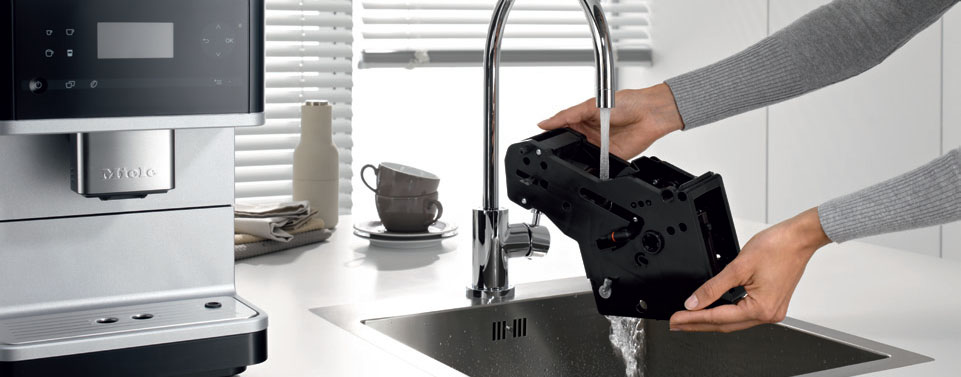
DAILY
You’ve gotten into the habit of enjoying your daily shot of espresso; now, by developing a few more simple daily habits, you can ensure that your espresso shot tastes its very best day after day.
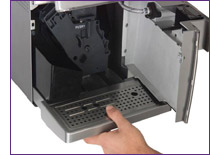 After brewing, dump spent grounds from your portafilter
After brewing, dump spent grounds from your portafilter- For small home machines, rinse the portafilter with water from the brew group
- For prosumer espresso makers, rinse the portafilter with water from the hot water dispenser
- Check the filter basket for residue and make sure it is clear before replacing
- Run water through the shower screen and scrub with a group brush
- Empty the drip tray at least every other day
- Purge the frothing wand by running steam through in order to dispense any milk residue
- Wipe the frothing wand with a damp rag to remove milk residue
- Wipe down the exterior of your espresso maker
IMPORTANT: Never use dish detergent on your espresso maker, as it will leave behind residue that will ruin the taste of your espresso.
WEEKLY
Your weekly cleaning and maintenance routine will differ depending on the type of espresso machine you are using.
If you own a semi-automatic espresso maker, your weekly cleaning routine will be relatively minimal. To ensure optimal brewing, simply soak the machine’s shower screen, filter basket, portafilter, and steam wand in a shallow bowl with an approved espresso machine cleaning solution or white vinegar and water for at least ½ hour. Wipe and purge your steam wand after soaking, and carefully dislodge any remaining crusty milk from the steam tip holes.
If you own an advanced pro-sumer style espresso maker with a 3-way solenoid valve, your cleaning routine may involve a more advanced step called “backflushing”. While this step might seem intimidating at first, you’ll be cleaning your espresso machine like a pro before you know it!
- Remove your portafilter’s filter basket and replace it with a blind basket (a filter basket with no holes)
- Place ½ teaspoon of designated backflush cleaner or white vinegar into the basket
- Place the portafilter with the blind basket back into the brew group and hit the pump
- Leave the pump running for about 20 seconds; when you hear the pump go quiet, it means the necessary pressure has built up and you can turn off the pump
- You will hear the sound of fast moving water as the cleaner is forced up the brew group, through the 3 way valve, and emptied into the drip tray
- This process must be repeated sans cleaner several more time until the water dispensed into the drip tray runs clear, indicating that the cleaning agent has been completely removed from your espresso maker
IMPORTANT: Not all espresso makers that utilize a 3-way solenoid valve require backflushing. Please refer to the user manual before you perform a backflush to avoid damaging your machine.
MONTHLY
As the months fly by, crucial cleaning steps like decalcifying your espresso maker can sometimes skip your mind. Decalcifying your machine every three months or so removes the calcium deposits that have built up over time from the minerals in your water. These calcium deposits can lead to a bitter flavor in your espresso and can eventually damage your machine.
For more detailed information on the decalcification process, please see our in-depth guide.
Another crucial factor in maintaining shot after shot of delicious espresso is clean water. By regularly checking your water filter and replacing it if necessary (Or, in the case of inline filtration systems that utilize cartridges, ensuring that those cartridges are still working), you can help guarantee that the very best water is going into your beverage.
With a little dedication and a lot of TLC, you can continue enjoying high-quality espresso day after day without ever changing out of your pajamas!


 Single Faucet Kegerator Beer Dispensers
Single Faucet Kegerator Beer Dispensers Dual Faucet Two Tap Kegerators
Dual Faucet Two Tap Kegerators Triple Faucet Three Tap Kegerators
Triple Faucet Three Tap Kegerators Undercounter Built-In Kegerators
Undercounter Built-In Kegerators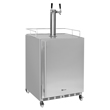 Outdoor Kegerator Beer Dispensers
Outdoor Kegerator Beer Dispensers Commercial Kegerators
Commercial Kegerators Mini Kegerators
Mini Kegerators Cold Brew & Nitro Coffee Dispenser Kegerators
Cold Brew & Nitro Coffee Dispenser Kegerators Home Brew Kegerators
Home Brew Kegerators Carbonated Water Kegerators
Carbonated Water Kegerators 15" Kegerators
15" Kegerators Kombucha Equipment
Kombucha Equipment Guinness® Dispensing Kegerators
Guinness® Dispensing Kegerators Wine Kegerators
Wine Kegerators Kegerator Cabinets
Kegerator Cabinets Kegerator Covers and Accessories
Kegerator Covers and Accessories Kegerators
Kegerators Kegerator Conversion Kits
Kegerator Conversion Kits Kegs & Keg Accessories
Kegs & Keg Accessories Beer Faucets
Beer Faucets Beer Shanks
Beer Shanks Draft Beer Towers
Draft Beer Towers Keg Taps Couplers
Keg Taps Couplers Regulators & Gas Equipment
Regulators & Gas Equipment Beer & Gas Line Hose
Beer & Gas Line Hose Co2 and Nitrogen Air Tanks
Co2 and Nitrogen Air Tanks Beer Line Cleaning Equipment
Beer Line Cleaning Equipment Drip Trays
Drip Trays System Fittings
System Fittings Jockey Boxes
Jockey Boxes Keg Beer Party Pumps
Keg Beer Party Pumps Glassware
Glassware Guinness® Dispensing Equipment
Guinness® Dispensing Equipment Remote Glycol Systems
Remote Glycol Systems Wine Cooler Refrigerators
Wine Cooler Refrigerators Wine Cellar Cabinets
Wine Cellar Cabinets Wine Racks
Wine Racks Cooling Units
Cooling Units Wine Dispensing Systems
Wine Dispensing Systems Wine Accessories
Wine Accessories Wine Making
Wine Making Nitro Hot Draft System
Nitro Hot Draft System Ready to Drink Bag-in-a-Box Coffee Dispensing Equipment
Ready to Drink Bag-in-a-Box Coffee Dispensing Equipment Nitrogen Infusers
Nitrogen Infusers Nitrogen Tanks & Generators
Nitrogen Tanks & Generators Nitrogen Beer Regulators
Nitrogen Beer Regulators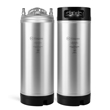 Nitro Cold Brew Coffee Kegs
Nitro Cold Brew Coffee Kegs Cold Brewed Coffee Tools
Cold Brewed Coffee Tools Cleaning Equipment
Cleaning Equipment Outdoor Appliances
Outdoor Appliances ADA Appliances
ADA Appliances Panel Ready Appliances
Panel Ready Appliances Commercial Grade Appliances
Commercial Grade Appliances Beverage Centers
Beverage Centers Refrigerators
Refrigerators Drawer Refrigerators
Drawer Refrigerators Ice Makers
Ice Makers Water Dispensers & Accessories
Water Dispensers & Accessories Freezers
Freezers Home Brew Equipment Kits
Home Brew Equipment Kits Fermentation Equipment
Fermentation Equipment Boiling and Mashing Equipment
Boiling and Mashing Equipment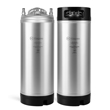 Home Brew Beer Kegs
Home Brew Beer Kegs Home Brew Kegerator Conversion Kits
Home Brew Kegerator Conversion Kits Brewing Tools
Brewing Tools Home Brew Ingredients
Home Brew Ingredients Cleaning Chemicals
Cleaning Chemicals Test Equipment
Test Equipment Home Brew Beer Bottles and Bottling Equipment
Home Brew Beer Bottles and Bottling Equipment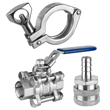 Brewery Fittings
Brewery Fittings Draft Beer Equipment
Draft Beer Equipment Homebrewing Equipment
Homebrewing Equipment Wine Equipment
Wine Equipment Luxury Appliances and Refrigeration
Luxury Appliances and Refrigeration Coffee Equipment
Coffee Equipment Kombucha
Kombucha The Beverage Blog
The Beverage Blog Frequently Asked Beer Questions
Frequently Asked Beer Questions Shop by Brand
Shop by Brand Shop by Category
Shop by Category